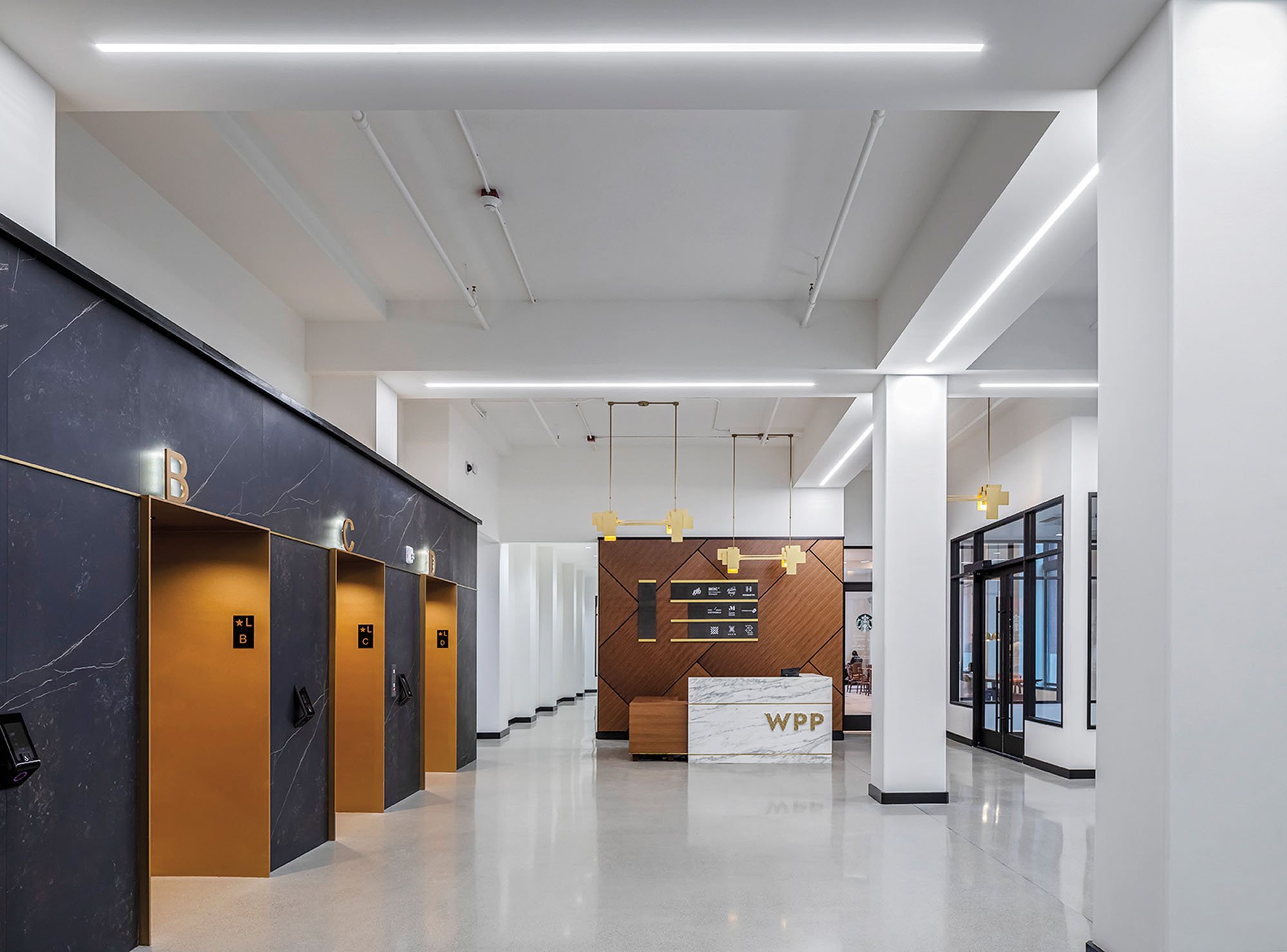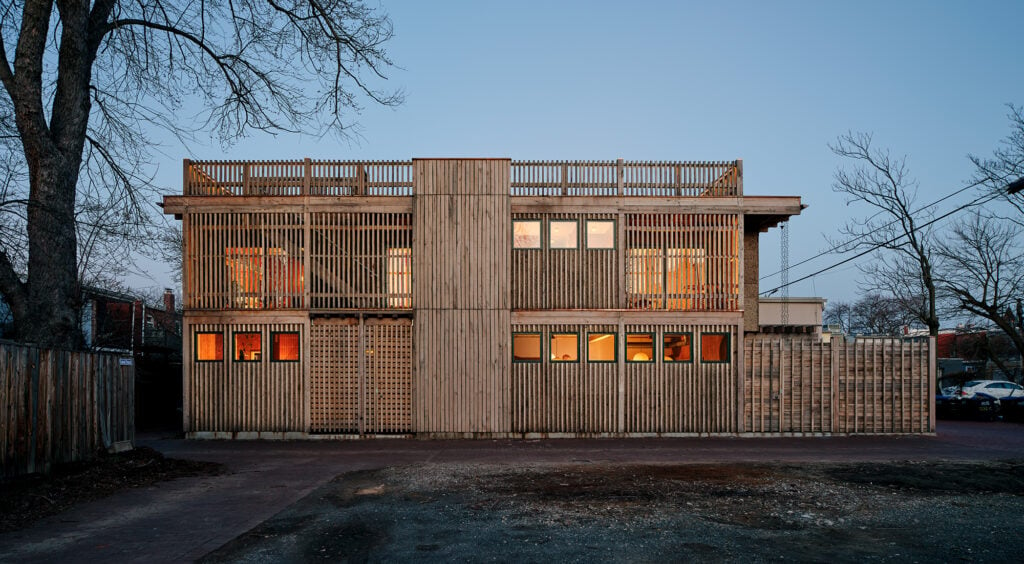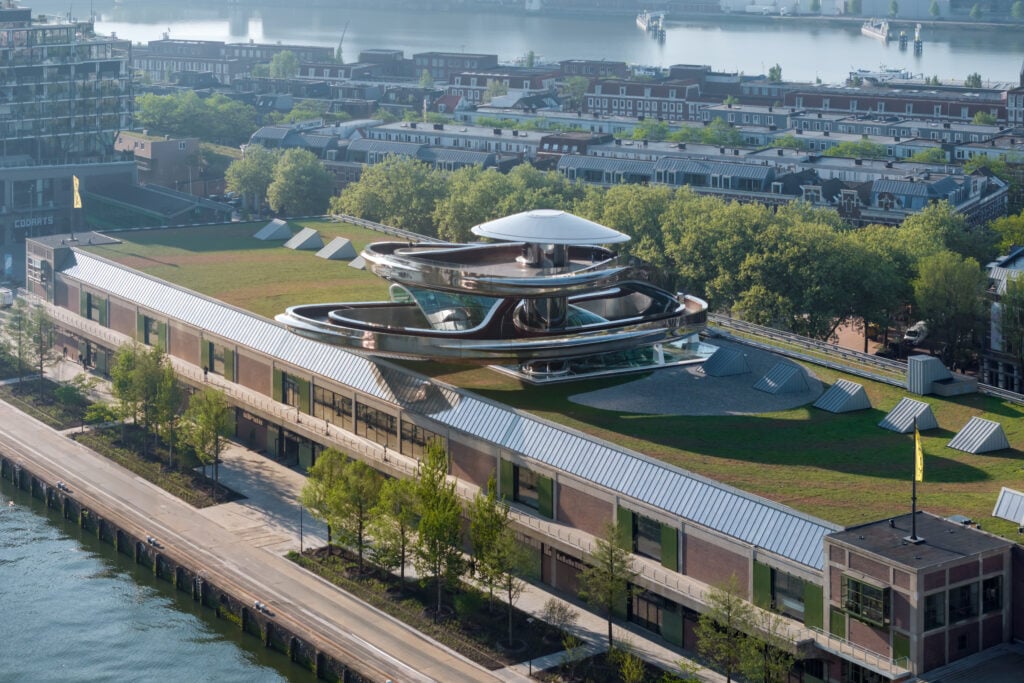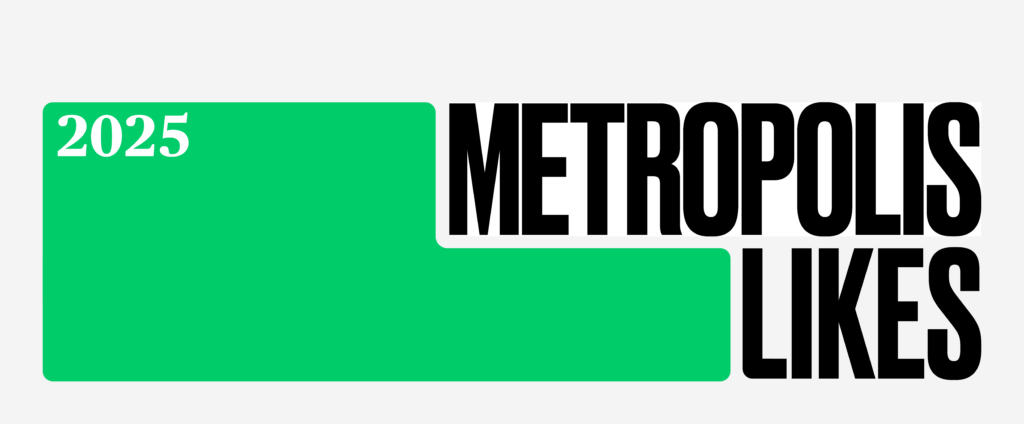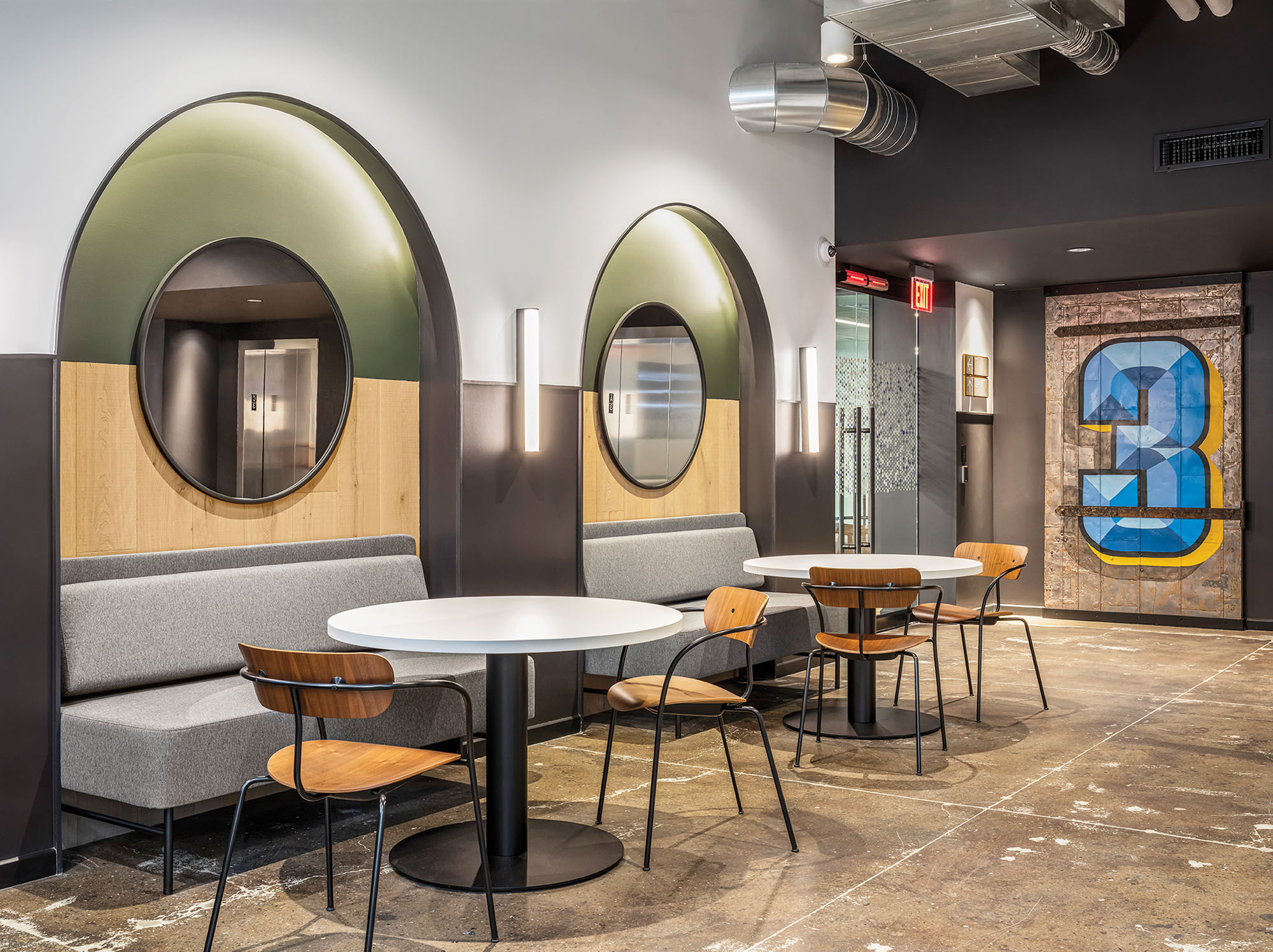
August 15, 2022
BDG Redesigns a Detroit Power Plant for the World’s Largest Ad Agency
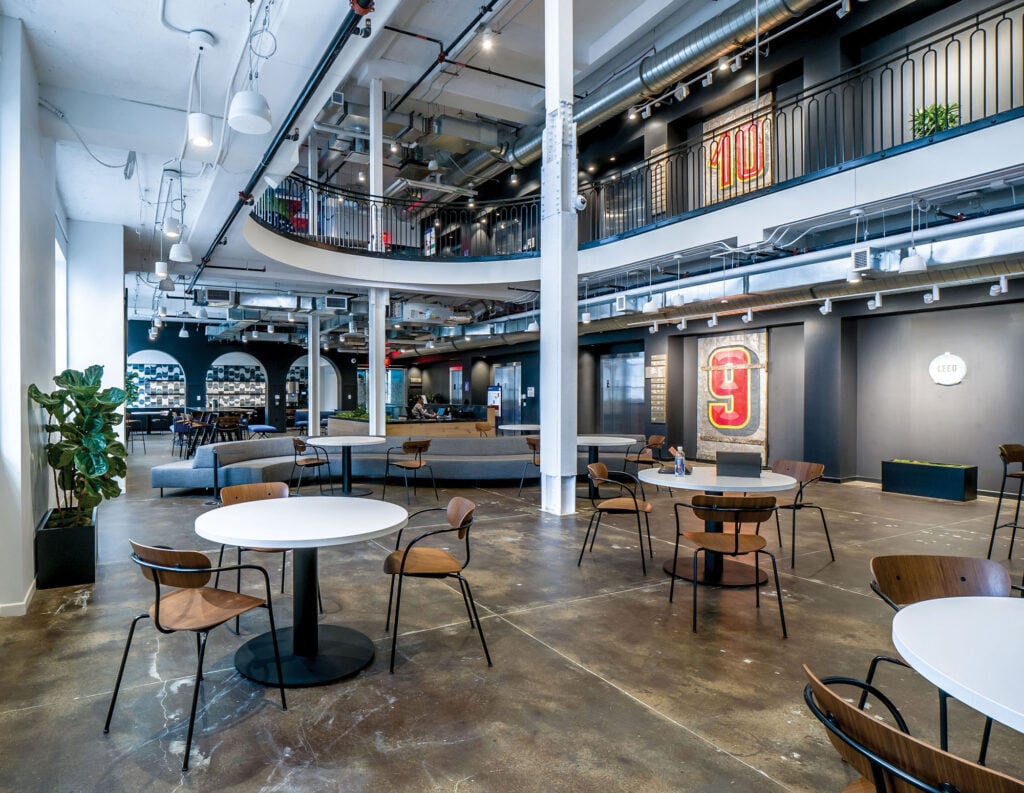
WPP took on its sprawling multinational form through the acquisition of dozens of smaller companies, including ad agencies J. Walter Thompson and the Ogilvy Group in the late 1980s. It now employs 130,000 creatives in more than 100 countries. In recent years, it accumulated so many marketing, branding, PR, tech, and commercial entities spread among countless offices that it had begun to identify itself more as a holding company than a unified brand. As part of an ongoing mission to streamline operations and clean up its own image—partially a response to questions about the ethics of working for oil corporations and lawsuits against some of their fossil fuel clients like Chevron for misrepresenting themselves as sustainable—WPP has been purchasing older buildings and adapting them for use as energy-efficient, “on-brand” headquarters.
“This is part of a global transformation strategy that has been in process for a number of years now,” says Guy Rockingham, head of project and development management, EMEA, at WPP. “Before we had an inefficiency through being in many different buildings just through the history of how the group came to be, with lots of different smaller companies and smaller entities.”
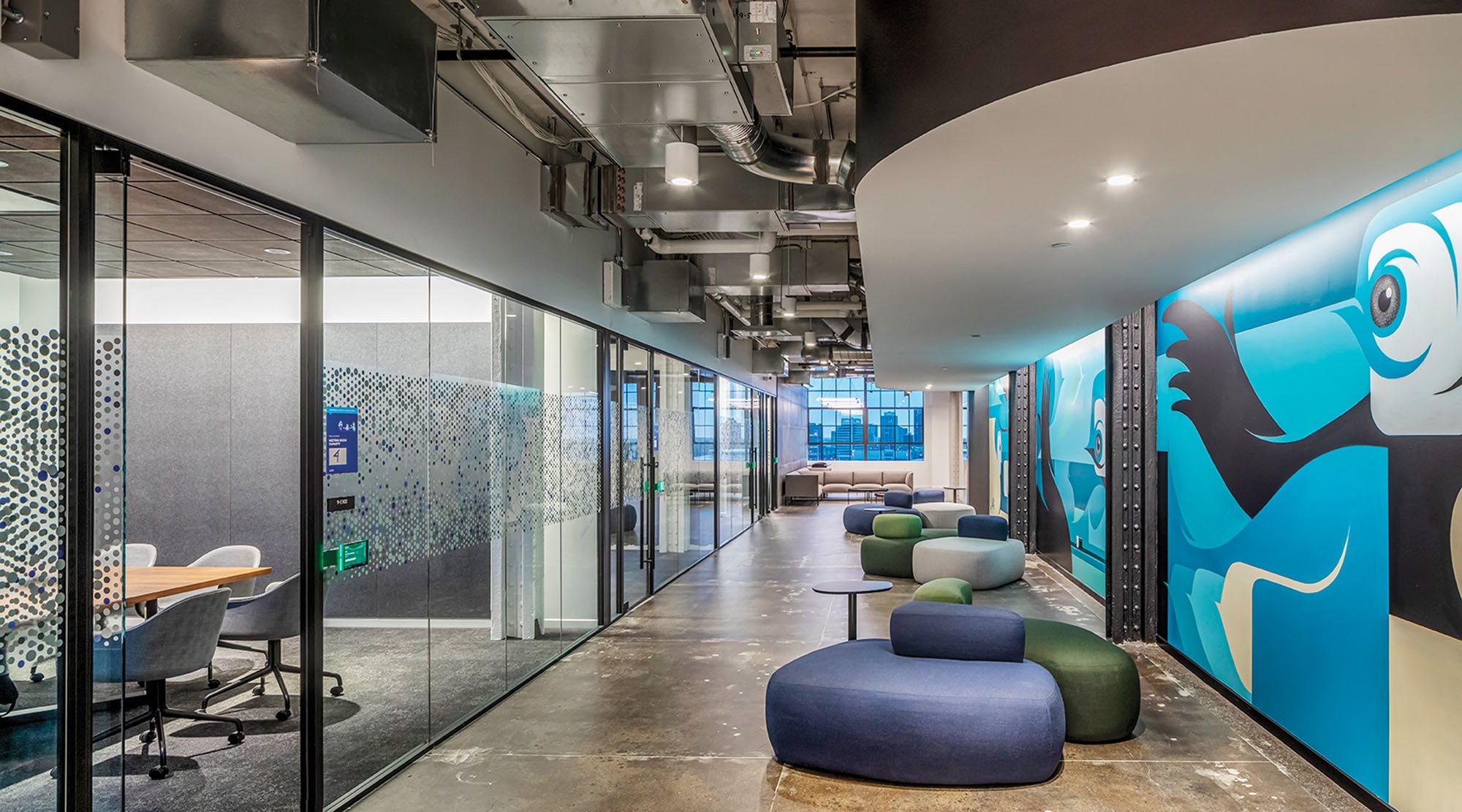
The Marquette building had already been gutted and was under renovation by a real estate developer when WPP set its sights on the steel structure clad in red brick, accented by a row of round-arched windows and terra-cotta bands. BDG—itself owned by WPP and active in 20 projects with that firm to reshuffle its global portfolio of office spaces—reimagined the building as a central campus for WPP-owned ad agencies GTB and VMLY&R. GTB has a long-established relationship with the Ford Motor Company, and other Detroit-area WPP brands include Hudson Rouge, Zubi, Xaxis, Barrows, and Icon Mobile.
“They really wanted to shift the focus of the business…to a company for creative transformation,” says Colin Macgadie, chief creative officer at BDG. “Part of that was reestablishing connections with existing clients.” He explains that the move downtown demonstrates to clients like Ford that the WPP brands are embracing the new thinking and new ideas that are driving Detroit’s ongoing transformation.
An elevator delivers visitors from the street to the top floor, where tall windows offer views of Detroit and the recently redesigned riverfront a half mile south. An atrium cut through the tenth level peers down to a cafeteria, a lounge, and social spaces below. The floors are polished concrete, with offices decked in gray
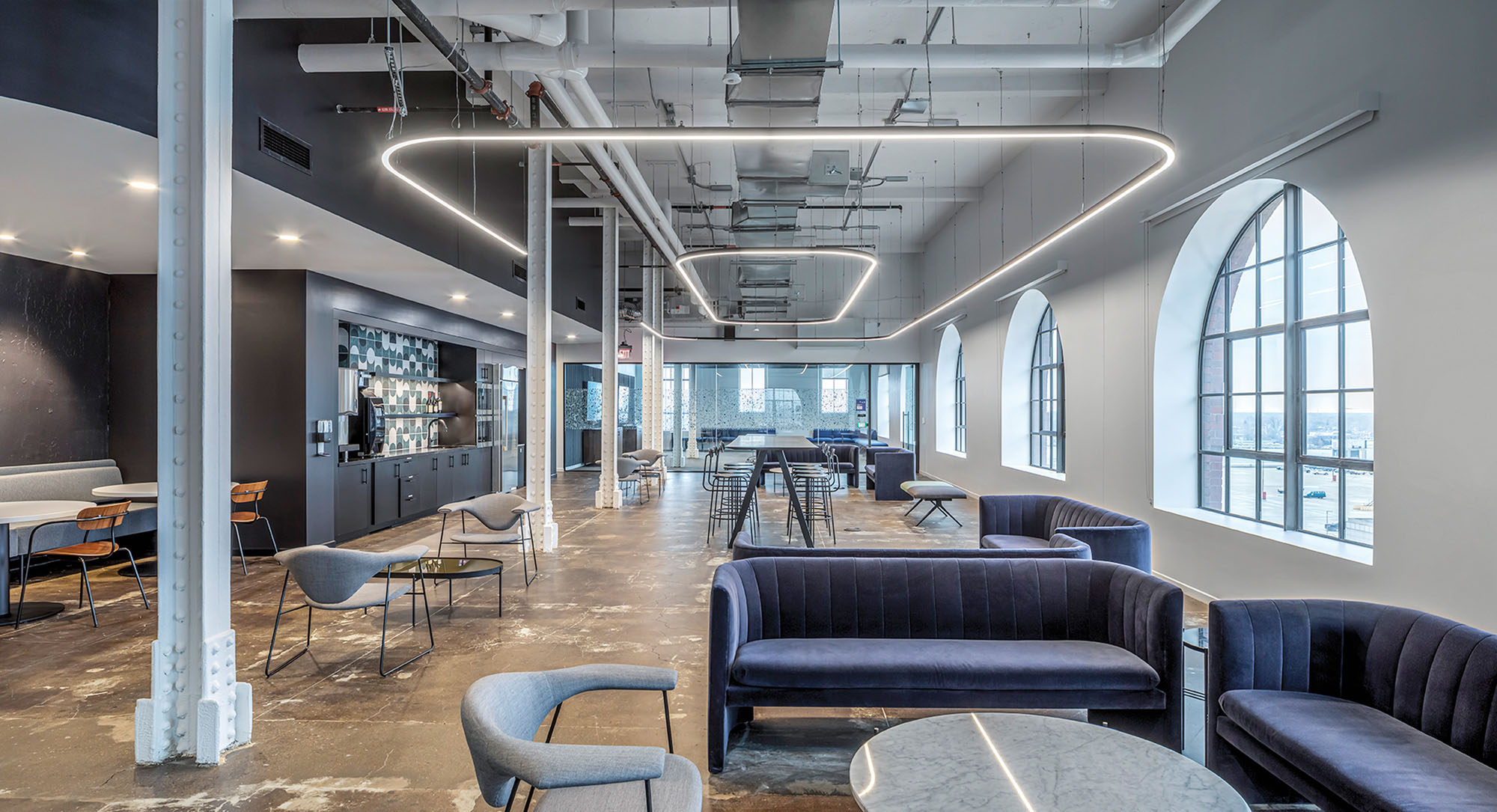
carpeting. Steel columns have been reinforced, painted white, and left exposed. Artworks commissioned from Detroit designers animate the walls with color and life, and custom lights evoke the car culture themes of movement and polished chrome.
“I know my design team in New York took inspiration from a lot of those visits. We introduced arches not just because of the arches in our building but because arches are prevalent in the historical architecture downtown,” says Macgadie. “We began to riff off of the context of the downtown environment as best we could without it becoming a pastiche or too clichéd.”
The move is another step in a moment of extraordinary change for downtown Detroit. A flood of 1,000 new office workers will utterly transform the environment of that corner of the city, yet the public transportation infrastructure lags far behind, bringing a daily onrush of automobiles and customers for local businesses that have survived. If the city can keep up, adapt, and spread the wealth, WPP’s new headquarters may turn out to be much more than a simple rebranding exercise.
Would you like to comment on this article? Send your thoughts to: [email protected]
Latest
Profiles
BLDUS Brings a ‘Farm-to-Shelter’ Approach to American Design
The Washington D.C.–based firm BLDUS is imagining a new American vernacular through natural materials and thoughtful placemaking.
Projects
MAD Architects’ FENIX is the World’s First Art Museum Dedicated to Migration
Located in Rotterdam, FENIX is also the Beijing-based firm’s first European museum project.
Products
Discover the Winners of the METROPOLISLikes 2025 Awards
This year’s product releases at NeoCon and Design Days signal a transformation in interior design.



